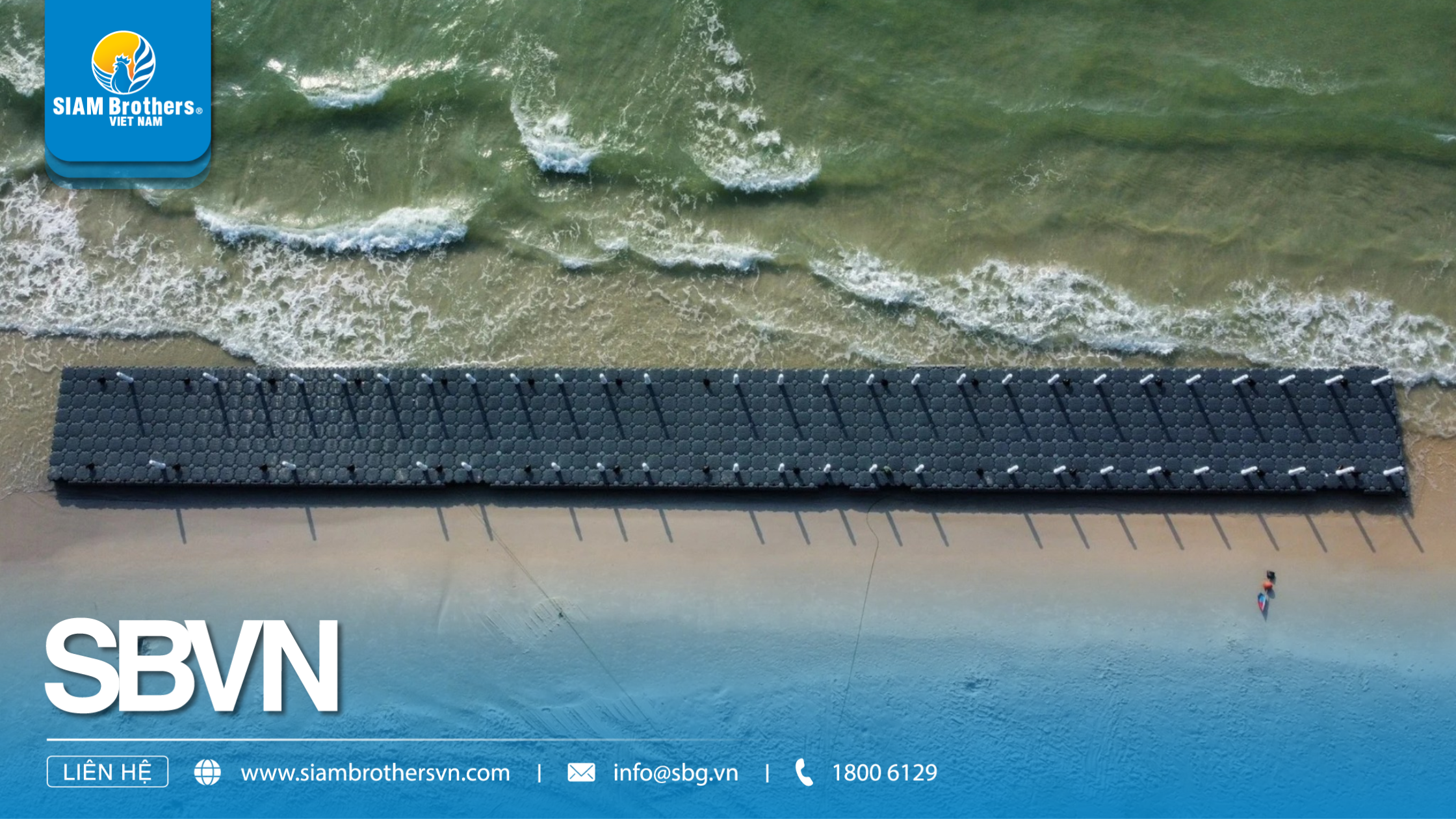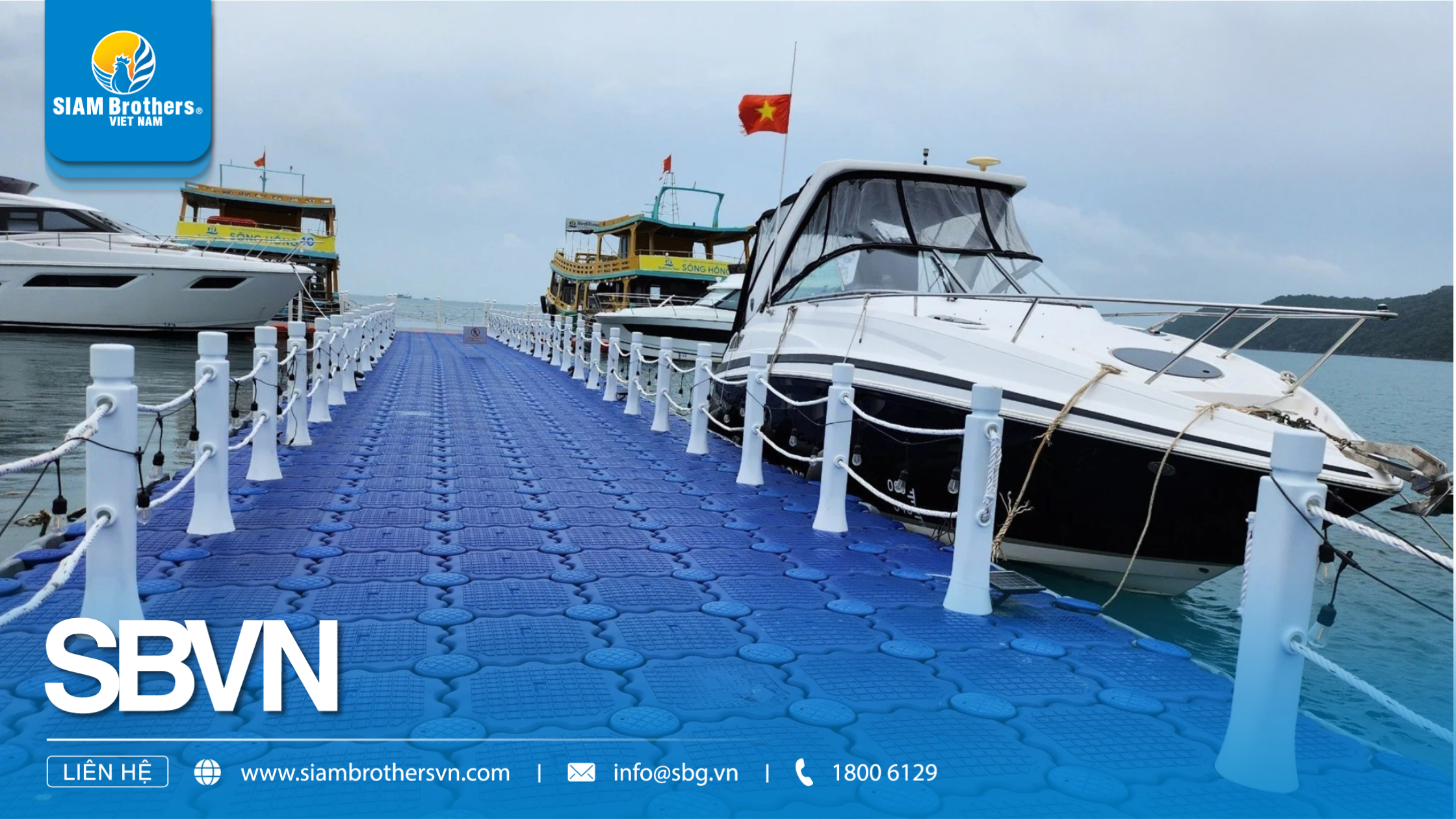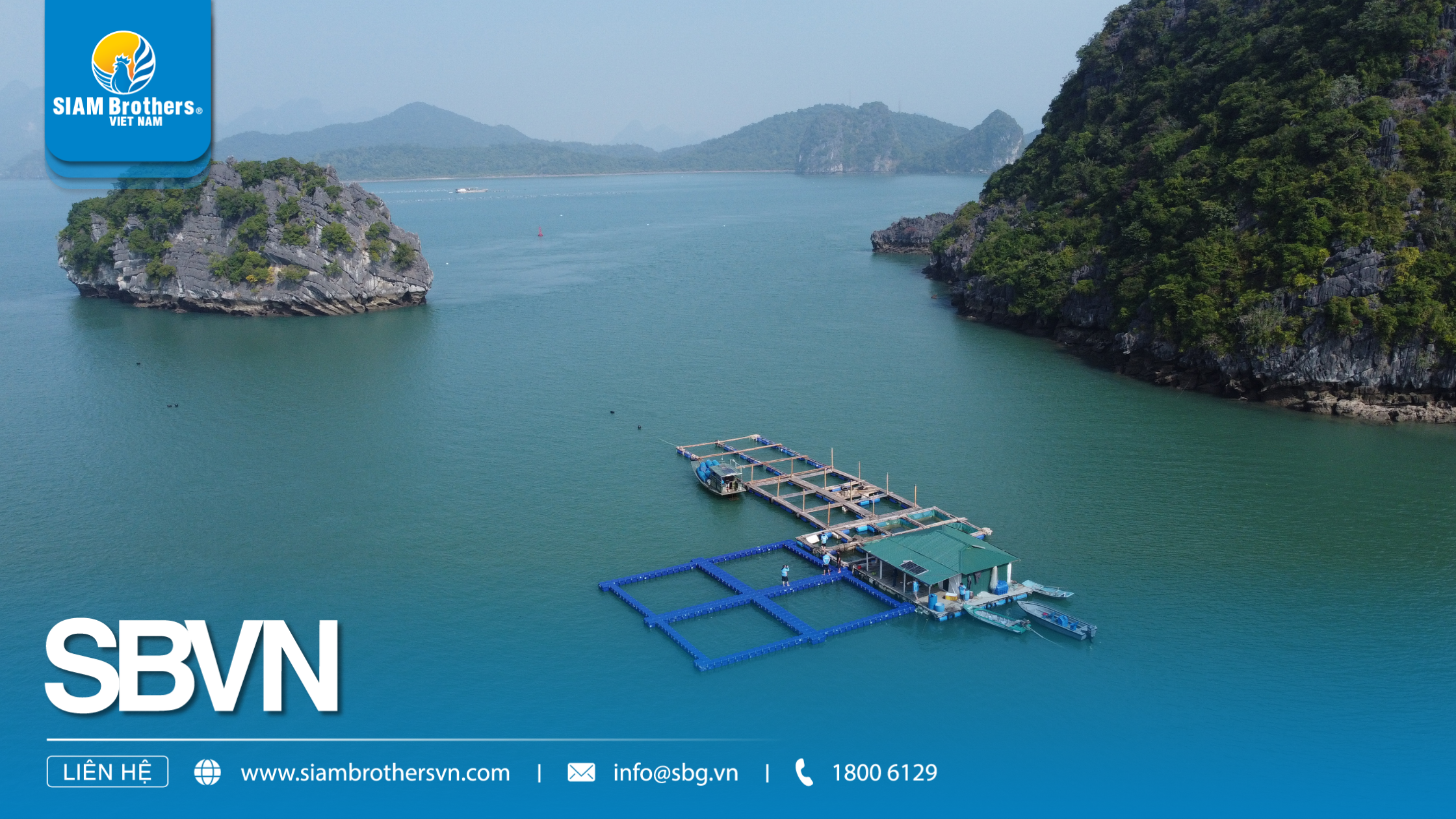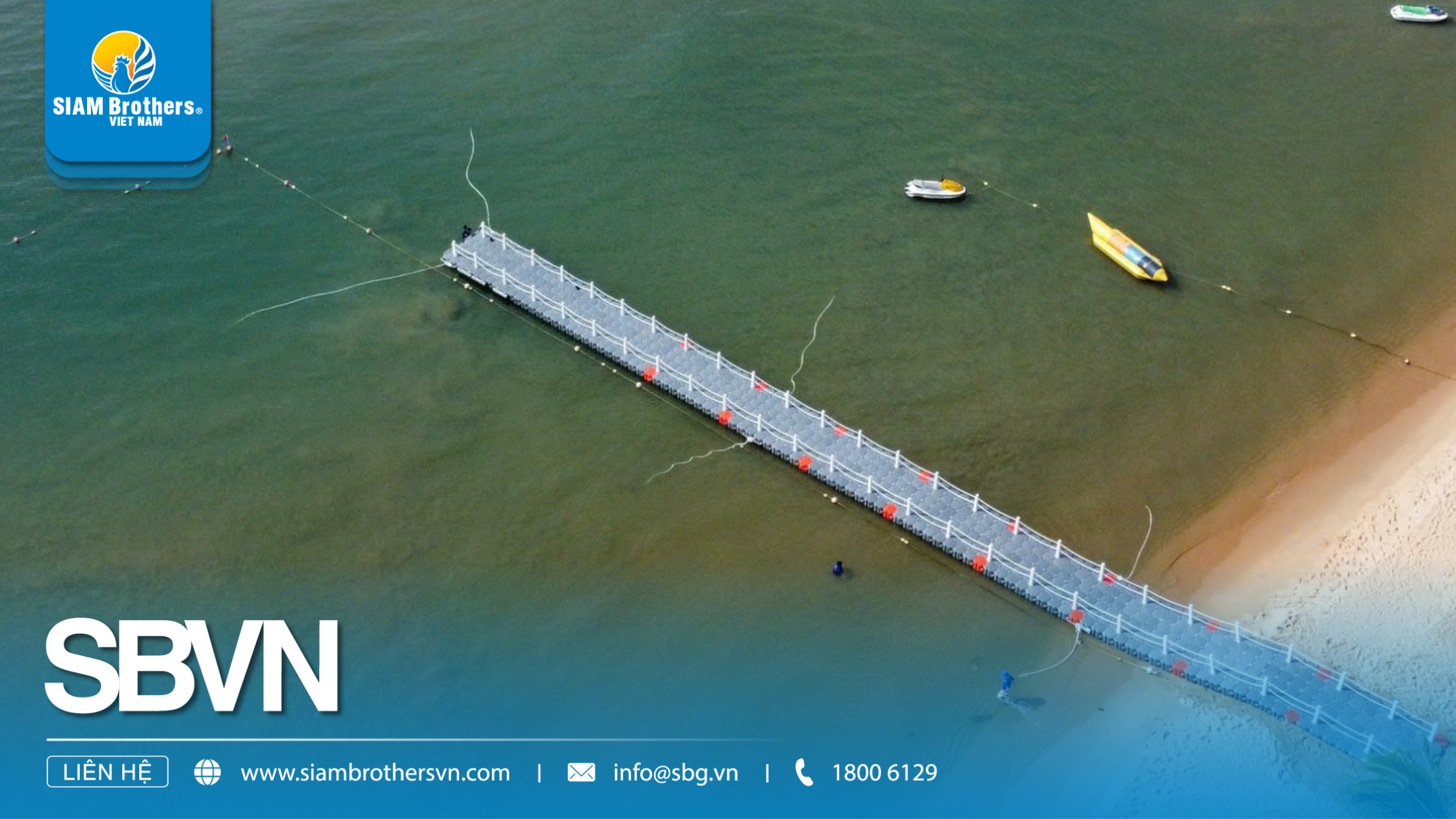Sea Floating Buoys play a crucial role in protecting fishing boats, aquaculture cages, and mooring systems against harsh marine conditions. If you are unsure which buoy type offers the best durability, safety, and performance, this guide from SIAM Brothers Vietnam provides clear insights into HDPE, PVC, and Composite buoys, including how to choose based on load capacity, installation location, and visibility color. You will also find practical recommendations on installation techniques, routine maintenance, and methods to extend buoy lifespan in saltwater environments. All information is based on real-world experience and marine projects across Vietnam, helping you make accurate, safe, and cost-effective decisions.
1. What Are Sea Floating Buoys and Their Role in Marine Fisheries?
Sea Floating Buoys are floating devices made from durable, saltwater-resistant, and impact-resistant materials used to mark locations, support mooring systems, or stabilise aquaculture cages at sea. Common materials include HDPE, PVC, and Composite—each offering different advantages in durability, weight, and wave resistance.

Key Features:
- Strong load capacity, maintaining buoyancy even in rough seas
- High visibility from long distances due to bright colors
- Saltwater-resistant, UV-resistant, ensuring long service life
1.1 Marking Aquaculture Cages and Mooring Zones
- Help fishermen easily locate cages and mooring points, reducing collisions and losses
- Improve operational safety, especially during adverse weather conditions
1.2 Enhancing Aquaculture Efficiency
- Stabilise cages and reduce drifting, providing better control over stock density and farming conditions
- Facilitate harvesting, inspection, and cage maintenance
1.3 Protecting Fishing Boats and Mooring Equipment
- Distribute mooring tension and stabilise vessel positions during storms or high waves
- Reduce structural damage and operational risks
1.4 Improving Offshore Management and Monitoring
- High-visibility Sea Floating Buoys support remote supervision
- Can be integrated with GPS or tracking devices for smarter fleet and cage management
2. Common Types of Sea Floating Buoys
2.1 HDPE Buoys
Characteristics:
- Made from high-quality HDPE with excellent mechanical strength, saltwater resistance, and UV endurance
- Available in multiple sizes, lightweight, easy to install and adjust
Applications: Ideal for aquaculture cages, fishing boat moorings, and offshore marking
Advantages: Long lifespan, low maintenance, high visibility
Notes: Choose HDPE buoys with proper thickness and structure depending on load capacity and sea conditions; SIAM Brothers Vietnam offers a range of multi-purpose HDPE buoy models suitable for Vietnamese waters

2.2 PVC Buoys
Characteristics:
- Lightweight, easy to produce, and more affordable than HDPE
- Moderate strength, suitable for temporary setups or calm-water areas
Applications: Used for light mooring systems, marking small cages, or areas with minimal wave impact
Advantages: Cost-effective, easy to transport and replace
Notes: Not ideal for large cages or rough sea zones; requires regular inspection
2.3 Composite Buoys
Characteristics:
- Constructed from high-strength composite materials with exceptional impact resistance
- Withstand temperature fluctuations and chemical exposure, suitable for harsh offshore environments
Applications: Used for large-vessel mooring, professional aquaculture systems, and critical marking points
Advantages: Very long lifespan, outstanding stability, minimal deformation over time
Notes: Higher cost than HDPE and PVC; consider budget and usage requirements
3. How to Choose Sea Floating Buoys Based on Your Application
3.1 Choosing Sea Floating Buoys for Fishing Boats
Selection criteria:
- Load capacity and buoy size must match the vessel’s weight and length.
- Ability to withstand strong waves, especially in coastal regions of Vietnam such as Ca Mau and Kien Giang.
- Bright, highly visible colors to enhance safety at sea.
Recommended buoy types:
- Large HDPE or Composite Sea Floating Buoys with excellent durability and impact resistance.
- Round or cylindrical designs that allow secure rope and anchor line attachment.

3.2 Choosing Sea Floating Buoys for Aquaculture Cages
Selection criteria:
- High resistance to saltwater, UV rays, and continuous wave pressure.
- Sufficient buoyancy to stabilize cages and prevent drifting.
Recommended buoy types:
- Round or oval HDPE Sea Floating Buoys in orange or red for easy identification.
- Models equipped with hooks or reinforced rings for secure mooring of aquaculture cages.

3.3 Choosing Sea Floating Buoys for Mooring Systems
Selection criteria:
- Strong load-bearing capacity to hold vessels in place under harsh sea conditions.
- Long-lasting durability with minimal maintenance.
- Easy installation and convenient adjustment of buoy spacing.
Recommended buoy types:
- Cylindrical HDPE or Composite Sea Floating Buoys with stainless-steel fittings.
- Buoys selected according to vessel weight and mooring tension requirements.

4. Installing and Maintaining Sea Floating Buoys
4.1 Installation Guidelines
Determine the correct location:
- Choose a placement that fits the buoy’s function—mooring, aquaculture cages, or area marking.
- Prioritize locations with lower impact risks but high visibility.
Buoy spacing and quantity:
- Calculate the number of buoys based on vessel weight, cage size, and mooring force distribution.
- Ensure even load distribution to prevent overloading a single buoy.
Secure attachment:
- Use high-quality ropes or stainless-steel fittings to secure the buoys in all sea conditions.
- Check knots, mooring rings, and connection points to minimize drifting or detachment.
4.2 Maintenance Guidelines for Sea Floating Buoys
Regular inspections:
- Inspect buoys, ropes, and mooring hardware every 2–4 weeks depending on sea conditions.
- Look for cracks, deformation, or wear to ensure timely replacement.
Cleaning:
- Rinse buoys with fresh water to remove salt, algae, and marine deposits.
- Avoid long exposure to direct sunlight to reduce plastic aging.
Storage:
- Store buoys in dry, shaded areas away from strong impacts.
- For long-term HDPE installations, record replacement intervals to maximize safety and lifespan.

5. Frequently Asked Questions About Sea Floating Buoys
5.1 How long do Sea Floating Buoys last?
- HDPE Sea Floating Buoys: 7–10 years, highly resistant to UV, saltwater, and strong waves.
- PVC Buoys: 3–5 years, suitable for calm waters or temporary use.
- Composite Buoys: Over 10 years with exceptional durability and impact resistance.
5.2 How many Sea Floating Buoys are required for aquaculture cages?
The quantity depends on:
- Cage size and total weight.
- Wave strength and currents in Vietnamese coastal areas.
- A medium aquaculture cage usually requires 4–6 HDPE buoys for stable support.
- Follow manufacturer or technical advisor recommendations for optimal safety.
5.3 Can I install Sea Floating Buoys for fishing boats by myself?
- Yes — if you are familiar with knotting techniques, mooring lines, and buoy spacing.
- However, for large vessels or rough-sea locations, it is best to seek professional guidance.
- Using high-quality HDPE or Composite Sea Floating Buoys minimizes drifting and damage.
5.4 Do Sea Floating Buoys require periodic maintenance?
- Yes. Regular maintenance ensures safety and prolonged efficiency.
- Check for cracks, deformation, or loose mooring lines, and clean buoys with fresh water.
- Replace damaged buoys promptly to avoid operational risks.
5.5 Where can I buy reliable Sea Floating Buoys?
- Recommendation: You can purchase high-quality Sea Floating Buoys from SIAM Brothers Vietnam, a trusted manufacturer that supplies HDPE buoys, aquaculture cage buoys, and mooring buoys with proven durability and long-term buoyancy.
- Buying tips: Choose suppliers with industry experience, strong reviews, professional technical support, and clear warranty policies.
- Application: Reliable buoys ensure safer operations for fishing boats, aquaculture cages, and mooring systems, reducing drift and damage in harsh marine environments.

Sea Floating Buoys play a crucial role in protecting fishing boats, aquaculture cages, and mooring systems while enhancing the efficiency of marine farming and offshore operations. Choosing the right type of HDPE, PVC, or Composite buoy—based on load capacity, installation location, and wave conditions in Vietnamese coastal areas—ensures long service life and optimal performance. To keep your buoys in the best working condition, always follow proper installation guidelines and perform regular maintenance. Contact SIAM Brothers Vietnam today for expert consultation and access to high-quality, reliable Sea Floating Buoys tailored to your specific needs.
Source: SIAM Brothers Vietnam
Contact us:
► Address: 5th floor, VRG Building, 177 Hai Ba Trung Street., Xuan Hoa Ward, Ho Chi Minh City, Vietnam
► Hotline: 1800 6129
► Tel: (+84) 28 38 912 889
► Email: info@sbg.vn
► Follow us for more details at: Facebook - Zalo OA - Tiktok - Youtube - LinkedIn
Download SBVN ID app here:
► CHPlay
► Appstore








